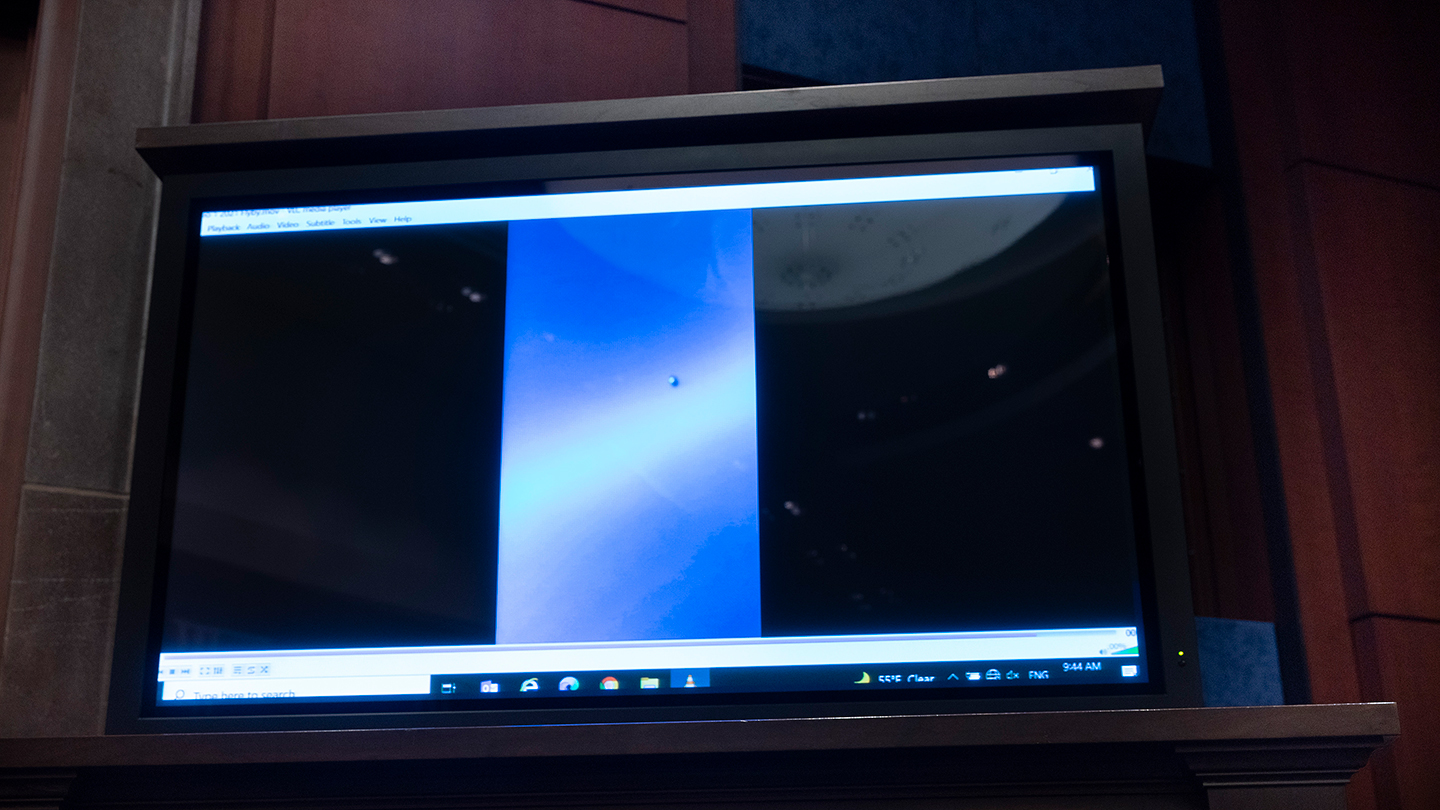Some scientists want serious research into UFOs. Here’s why
Throughout history, people have spotted mysterious effects or objects in the sky. Some have claimed such “unidentified flying objects,” or UFOs, are alien spaceships. Others have shown that many UFOs have earthly explanations. Some could be aircraft, for example, or atmospheric phenomena. But not all of these mystery effects have been explained. That’s why the U.S. government takes them seriously. And some researchers think the scientific community should, too.
Unexplained sights in the sky are officially known as “unidentified aerial phenomena,” or UAP. On May 17, the U.S. Congress held its first public hearing about UAP in decades. Two U.S. government intelligence officials described efforts to catalog and analyze sightings. Many UFOs have been spotted by military personnel such as pilots. And the U.S. government wants to know if such unexplained phenomena could pose a threat to national security.
At the hearing, Scott Bray shared new details on a government UAP database. Bray is the deputy director of naval intelligence. The database he described contains about 400 UAP sightings from 2004 to 2021. Many of those sightings include images or video. Officials have pegged some of the sightings to sensor issues or other mundane explanations. But there are others that officials “can’t explain,” Bray said.

Bray stressed that nothing in the database “would suggest it’s anything [alien] in origin.” The same goes for UFO sightings investigated by a special government task force.
Ronald Moultrie is the undersecretary of defense for intelligence & security. He and Bray both said “insufficient data” is a barrier to understanding UFOs. “That’s one of the challenges we have,” Moultrie said.
That’s something scientists can help with, say Jacob Haqq Misra and Ravi Kopparapu. These researchers are astrobiologists. They study the potential for life beyond Earth. Haqq Misra works at Blue Marble Space Institute of Science in Seattle, Wash. Kopparapu is based at NASA’s Goddard Space Flight Center in Greenbelt, Md.
NASA also is taking UFOs seriously. On June 9, the U.S. space agency announced it will begin a study of UAP. NASA is putting together a group of scientists and other experts to learn more about UAP.
Science News (the sister publication of Science News for Students) spoke with Haqq Misra and Kopparapu to learn about how and why researchers should help study UAP. Their answers have been edited for clarity.
What are UAP?
Haqq Misra: “What are they?” is the billion-dollar question. We don’t know what they are. That’s what makes them interesting.
“Unidentified aerial phenomena,” or UAP, is the term that the military uses. It’s a little different from the term UFO. It allows for the possibility that mysterious sights in the sky may not necessarily be solid objects. So UAP may be a more all-encompassing term.
Should scientists study them? Why?
Kopparapu: Yes. We conduct scientific studies of unknown phenomena all the time. This should not be any different. But when conducting those studies, we should not let our speculations drive the conclusions. The collected data should do it.
Haqq Misra: As scientists, what we should do is study things we don’t understand.
With UAP, there seem to be some strange observations that are hard to explain. Maybe they’re a sign of something like new physics. Or maybe they’re just instrument errors that we don’t understand. UAP could even be things that birds are doing.
It could be anything. But any of those possibilities, from the most extreme to the most mundane, would teach us something.
So, there’s the scientific curiosity. And it’s also about safety for pilots, too. That’s especially true if there’s something in the sky that pilots consider a flight safety risk.
How can we study these phenomena?
Haqq Misra: The problem with studying UAP so far is that all of the data are held by the government. From the [May 17] hearing, there does seem to be a plan to make some data public. At least, once officials have made sure that would not pose any security risks. I’m not holding my breath for that to happen soon. It was nice to hear, though.
The reality is, if you want to understand a particular set of data, you need to know about the instrument that collected the data. Military instruments are probably classified for good reason. That is, for our safety. I doubt we’re going to get the kind of data from the government that we need to scientifically answer what UAP are. Even if you had that data — from the government or commercial pilots or others — it has not been purposely collected. These have been accidental, sporadic observations.
What you would need is to set up a network of detectors all around the world. Ideally, you’d have ground-based sensors and satellite coverage. It’s not enough for someone to just see something. You need to confirm a detection with multiple sensors looking at multiple wavelengths of light.
Kopparapu: Some UAP sightings are transient events. We need, for example, fast-tracking cameras. We also need optical, infrared and radar observations to collect more data. This would help us find patterns in the events’ behaviors.
And we need to share such data with scientists. That way, independent groups can reach a consensus. This is how science progresses. There are some efforts from researchers at universities in this direction. So, that is a good sign.
What are some possible next steps for the scientific community?
Haqq Misra: There are some groups that are trying to build detectors now. Fundraising is the hardest part. [The nonprofit] UAPx is one. The Galileo Project [at Harvard University in Cambridge, Mass.] is another.
Stigma has been a big problem for investigating UAP. It seems like the military is trying to reduce the stigma around it. That’s important for science too. If that starts to change more in the culture, that would go a long way.
The NASA announcement is a good step in the direction of UAP being considered an important scientific problem.
Kopparapu: I think the scientific study of UAP should not be stigmatized. Open discussions, comments and constructive criticisms can help further the study of UAP.
There should be discussions about how and which kinds of instruments are needed to collect data. The focus should be on collecting and sharing the data.
How did you get interested in this topic?
Kopparapu: Over a couple of years, I read several articles either dismissing or arguing for a particular explanation of UAP. Then I started digging into it. I found physicist James McDonald’s “Science in Default” report from 1969. That report about UFOs changed my perspective. It was written similar to how we write our scientific articles. That resonated with me as a scientist. I started to think that a science investigation is the only way we can understand UAP.
Haqq Misra: I’m an astrobiologist and other people asked me about UFOs. UFOs are not necessarily an astrobiology topic, because we don’t know what they are. But lots of people think that they’re aliens. And I felt a little silly, being an astrobiologist and having nothing to say.
So, I went to Carl Sagan’s files. [Sagan was a famous astronomer and astrobiologist in the 20th century.] I realized that even though he lived decades before me, there are things in his files that we’re talking about now. Specifically, things related to airborne anomalies seen by pilots.
Ultimately, I realized for a scientist who wants to understand UFOs, there’s a lot of noise to sift through. There’s a lot of public discussion about topics like crop circles, alien abductions and paranormal stories that muddy the waters. The more we can be clear about the specific aerial anomalies that we’re talking about, the more we can actually solve the problem.



